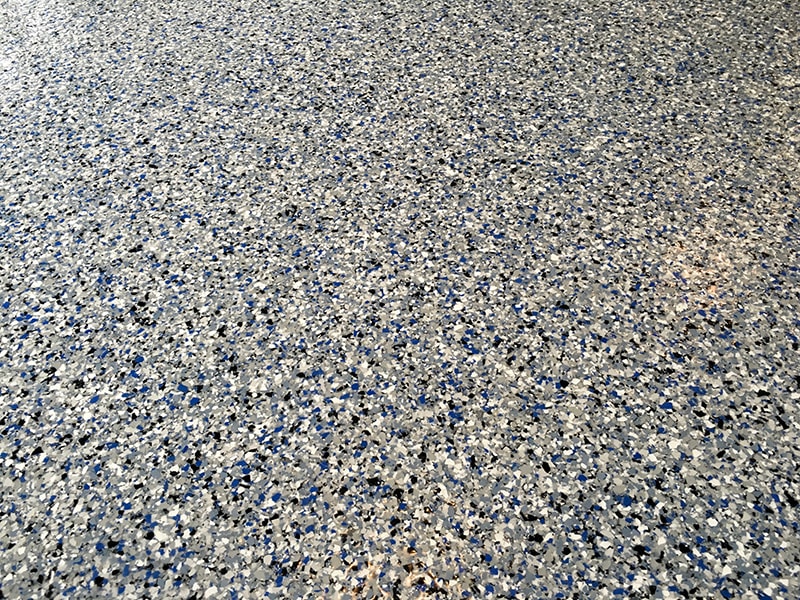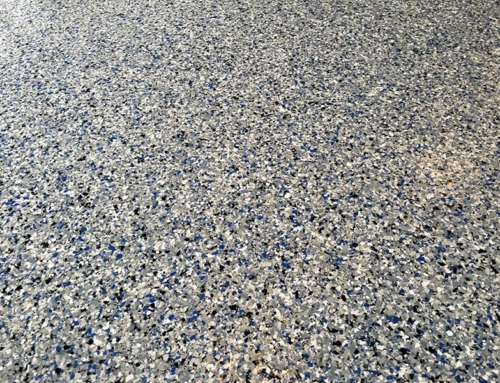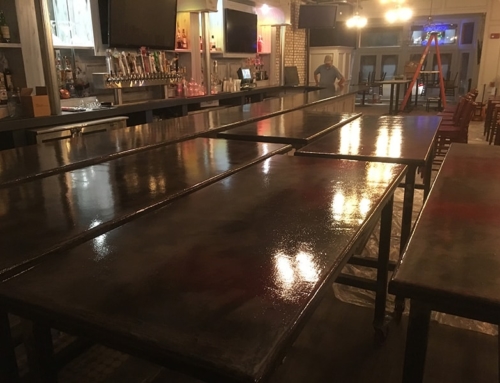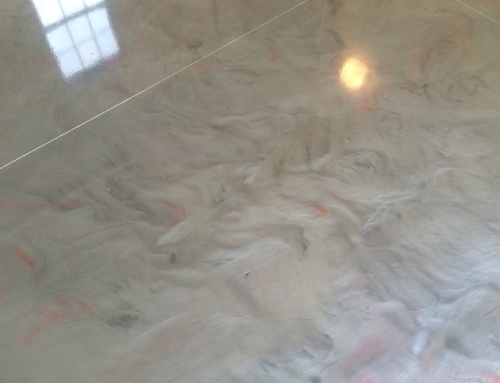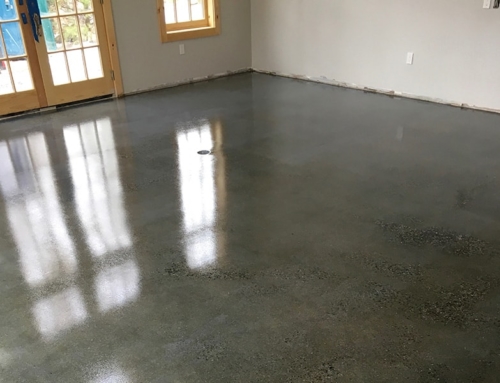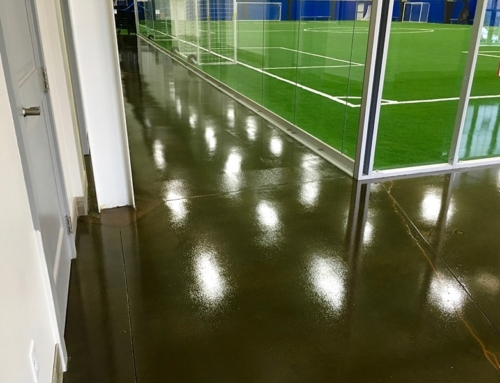We strive to provide the best quality product and service at the best possible price. We do recognize though that we work in a competitive environment and would not like to loose your project to a competitor. We will therefore better any quote you receive provided the specification of the service they provide is of a similar quality to the service we have quoted for. When you compare estimates for installing your epoxy garage floor it is essential to make sure that you are not comparing ‘Apples to Oranges’, as the saying goes. There are may different products available and many methods of installation. This post is intended to help you to make a fair comparison of your estimates.
The installation of an epoxy flake garage floor coating consists of five elements, each of which should be detailed on the estimate.
1. Floor Preparation – Anyone that has used epoxy knows how sticky it is and how it attaches itself to almost anything. However, in order for your epoxy coating to be long lasting and effective it needs to mechanically bond to the concrete floor. This means that the floor needs to be mechanically ground with heavy duty grinding equipment. We use a Werkmaster Titan Grinding Machine which does several things. It cleans all of the impurities like oils, grease, dirt and paint off the floor; it smooths the floor out and removes high points; it exposes cracks and roughens the surface to facilitate adhesion. Many floor systems recommend cleaning the floor and coating it with a primer coat. From our experience the floors delaminate within a few years.
2. Base coat of epoxy – The base coat of epoxy should be heavy enough to fully cover the floor and allow the flakes to settle into the wet surface. This provides additional strength similar to the fibers used in fiberglass. Epoxy coatings are measured in ‘square feet per gallon’. We recommend using a base coat of colored, 100% solids epoxy at a coverage rate of 80 square feet per gallon. In addition to specifying the coverage rate in the estimate your contractor should also specify the name of the manufacturer. Look for a branded product and check out their web site. We recommend using Elite Crete UL7 Base Coat Epoxy.
3. Broadcast of color flakes – There are several companies that manufacture color flakes and there are thousands of colors and color blends to choose from. We recommend using 1/4″ flakes because they can be applied in a single broadcast, cover well and have great strength. Smaller flakes usually require two coats which increases the cost and installation time. Your contractor estimate should specify the quantity of flakes they will use in ‘square feet per pound’. A full broadcast of flakes should be 5 square feet per pound. This means that a typical double garage will use 100 pounds of flakes. We do not recommend a ‘partial’ broadcast or ‘Confetti’ application. We recommend the use of Torginol Color Flakes.
4. Top coat application – Once the base coat and flakes have fully cured, the excess flakes are removed and the floor is lightly sanded. The top coat is then applied. There are several top coats available for different applications. Polyaspartic top coats are very strong and are not affected by sunlight. The coating is thinner than epoxy and the resulting floor is rough and often difficult to clean. Regular clear epoxy provides a smooth, stippled surface but can turn yellow when exposed to prolonged sunlight. We recommend the use of 100% solids clear epoxy with UV protection. This provides a smooth surface that is easy to clean and does not yellow with age or sunlight exposure. Top coat application rates should be from 80-100 square feet per gallon. Again, make sure your contractor is using a branded product. We recommend the use of Elite Crete VR1 UV Resistant Epoxy.
5. Detailing – ‘The Devil is in the detail’ the saying goes. These are the little things that make the difference. Most garages have a section outside the doors when they are closed. This should never be coated with flakes as it is exposed to the elements all the time. We prefer to cut a channel in the floor to provide a definitive edge and transition from the flakes to the outside floor. We then coat the exterior section with Elite Crete CSS Exterior Sealer in clear, gray or brown to match the floor.
Another detail is how cracks are remediated, they cannot just be left open under the epoxy. Cracks should be filled with a branded repair epoxy after establishing wether they are likely to recur. If so, control joints should be cut into the concrete slab.
Finally, if there are any moisture issues with the slab we recommend applying a coat of Elite Crete VB5 Vapor Barrier prior to the base coat. VB5 is a water based epoxy that will soak into the substrate, neutralize any water present in the slab and prevent further moisture from coming up through the floor.
Make sure that you contractor estimates provide all of the details and information you need to make a balanced and fair comparison. Ask to see samples and pictures of similar jobs. If they won’t provide the details then either insist or take heed. Remember, you only want to install an epoxy flake garage floor coating once.
Robin Leigh
EliteConcreteSystems.com


